Estimated Reading Time: 34 minutes (6491 words)
Stories have always transported us, but today’s immersive storytelling breaks the fourth wall entirely, inviting us to step through the looking glass and live within narratives rather than merely consume them. This evolution isn’t just changing entertainment—it’s rewiring our expectations of what a story can be and how deeply it can affect us.
The most powerful stories no longer happen to us; they happen around us and through us. They linger in our senses long after the book closes or the credits roll, leaving impressions as vivid as actual memories. This is the promise of truly immersive storytelling—experiences so complete they blur the boundaries between fiction and lived experience.
Creators across mediums are discovering that immersion isn’t about overwhelming audiences with sensation or technology, but about crafting environments where imagination flourishes naturally. The most effective immersive worlds aren’t necessarily the most detailed or technologically advanced, but those that create the perfect balance of guidance and discovery.
The techniques that make this possible aren’t the sole domain of big-budget productions or cutting-edge technologies. They’re accessible principles that any storyteller can master, whether crafting novels, games, films, or experiences that don’t yet have names. At their core, they share a fundamental understanding of how human attention and emotion intertwine to create the sensation of presence.
Immersive storytelling transports audiences into fully realized worlds, creating experiences that resonate long after the story ends. As creators push boundaries across media platforms, mastering these techniques becomes essential for anyone looking to craft compelling narratives that truly engage today’s audiences.
- Blend sensory details deliberately: Engage multiple senses in your narrative by combining visual descriptions with sounds, smells, and textures that transport audiences completely into your world. This multisensory approach creates memory anchors that make experiences stick.
- Design emotional journeys, not just plots: Effective immersive storytelling maps the emotional arc first, ensuring audiences feel genuine connection to characters and situations. The most memorable stories make us feel something authentic rather than simply observing events.
- Embrace technological tools thoughtfully: VR, AR, and interactive elements can dramatically enhance immersion, but only when they serve the story rather than distract from it. Choose technologies that remove barriers between audience and narrative.
- Create breathing room for audience imagination: The most immersive stories leave strategic gaps for audiences to fill with their own interpretations and experiences. Perfect immersion paradoxically requires some incompleteness.
- Build consistent worlds with flexible boundaries: Establish clear rules for your story world but allow for enough elasticity to surprise audiences. Consistency creates trust while flexibility prevents predictability.
- Balance participation with guidance: Interactive storytelling works best when audiences feel they have meaningful agency within a thoughtfully designed framework. Too much freedom can be as disorienting as too little.
- Make inclusivity your narrative strength: Stories that acknowledge diverse perspectives and experiences create more universal points of entry for audiences. Inclusive immersion means more people can truly see themselves in your world.
The line between audience and story continues to blur as new technologies and techniques emerge. The following guide explores how creators across films, games, literature and emerging media can craft experiences that don’t just tell stories, but create worlds that audiences genuinely inhabit.

The Multisensory Canvas: Beyond Visual Storytelling
Blending sensory palettes to create memory anchors
The most memorable stories engage more than just our eyes. They create what neuroscientists call “multimodal encoding”—memories formed through multiple sensory channels that become more resilient and accessible over time. When crafting immersive worlds, deliberate sensory orchestration transforms passive viewing into experiential memory.
Consider how you might layer sound beneath visual elements: the distant rumble of thunder before rain appears on screen, the barely perceptible creak of floorboards in a seemingly empty house, or the shifting acoustic quality as characters move between spaces. These sonic elements create spatial awareness that visuals alone cannot achieve.
Texture provides another powerful dimension. Even in mediums where physical touch isn’t possible, textural description creates phantom sensations—what psychologists call “embodied cognition.” The rough grain of weathered wood, the cool smoothness of marble, or the sticky resistance of sap become experiences readers and viewers can almost feel.
The most effective storytellers create sensory “anchors”—distinctive combinations that become shorthand for emotions or places. Think of how the Harry Potter universe uses specific sensory clusters: the butter-sweet scent and warming sensation of Butterbeer immediately transports fans back to Hogsmeade. These anchors, once established, require only the slightest reference to trigger the full sensory memory.
The sensory hierarchy: which details matter most
Not all sensory details carry equal weight. Our brains prioritize certain inputs over others, and immersive storytelling must reflect this natural hierarchy while strategically subverting it when impact is needed.
Vision typically dominates our sensory processing, which explains the heavy visual emphasis in most storytelling. However, scent forms our strongest memory connections, making olfactory details disproportionately powerful in creating lasting impressions. A character’s signature perfume or the specific smell of a location can become more identifying than their appearance.
Sound creates spatial awareness and emotional context simultaneously. It’s the sensory channel most directly connected to our alertness and survival instincts, which explains why horror and suspense rely so heavily on acoustic manipulation. The absence of expected sound creates immediate tension; unexpected sounds trigger immediate emotional responses.
Touch details—temperature, pressure, texture—create immediacy because they situate the audience within the physical parameters of your world. When describing extreme cold, details about numbed fingertips and crystallized breath will resonate more deeply than simply stating the temperature.
The key is selective intensity. Rather than cataloging all sensory aspects of a scene, identify which sense would most powerfully communicate the emotional truth of the moment, then elevate it above others. When a character experiences profound grief, perhaps sounds become muffled while physical sensations intensify—mirroring how shock affects perception.
Capturing the invisible: atmosphere and ambient storytelling
Beyond specific sensory details lies the realm of atmosphere—the cumulative effect that creates mood and tone. Atmosphere emerges from the spaces between explicit details, suggesting presence without naming it directly.
Ambient storytelling works through environmental cues that communicate narrative without interrupting it. In game design, this might appear as environmental storytelling—objects placed to suggest recent events without explicit explanation. In literature, it manifests as subtext—the unspoken tensions beneath dialogue. In film, it emerges through blocking, lighting, and composition that reveal character relationships without exposition.
Mastering atmosphere requires understanding the power of implication. A room where objects are meticulously arranged tells one story; the same room with items slightly displaced tells another. Neither requires direct explanation to create narrative meaning. This principle of atmospheric storytelling becomes especially crucial when building immersive fantasy worlds, where every environmental detail must feel authentic to the fictional universe.
Weather and time of day function as atmospheric amplifiers, intensifying emotional states through external conditions. The pathetic fallacy—where environmental conditions mirror emotional states—remains effective because it taps into our instinctive connection between inner and outer worlds.
The most sophisticated immersive worlds maintain atmospheric consistency while allowing for meaningful variation. This creates a baseline reality that grounds the audience while providing contrast when emotionally significant moments require atmospheric shifts.
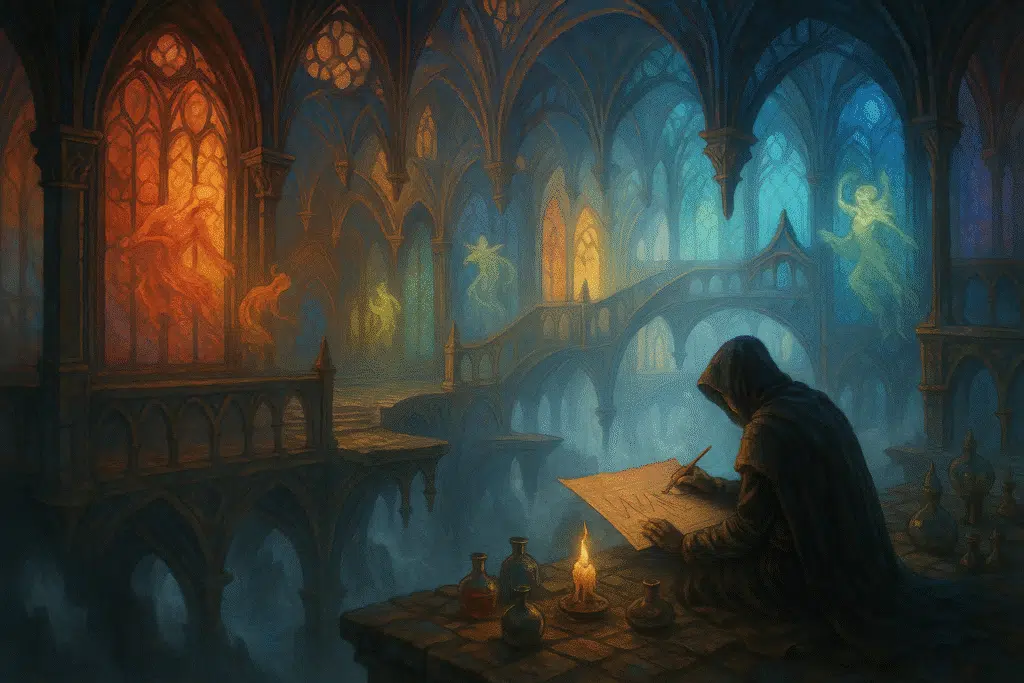
Emotional Architecture in Narrative Design
Mapping feeling before plot
Traditional storytelling often begins with plot—the sequence of events that drive the narrative forward. Immersive storytelling inverts this approach by first mapping the emotional journey audiences will experience, then constructing plot elements to serve that journey.
This “emotions-first” approach recognizes that audiences rarely remember the exact sequence of events in stories, but they universally remember how stories made them feel. By charting emotional waypoints before detailing plot mechanisms, creators ensure that technical elements remain in service to the core emotional experience.
Effective emotional mapping identifies not just which emotions you want to evoke, but their intensity, duration, and relationship to one another. A story might require a slow build of unease that suddenly spikes into terror, or alternating waves of hope and despair that gradually shift in frequency until hope dominates.
The most sophisticated emotional architectures create what psychologists call “emotional granularity”—the ability to experience nuanced, complex emotional states rather than broad categories of feeling. Instead of simple fear, audiences might experience a precise blend of dread, curiosity, and reluctant fascination. This emotional specificity creates more memorable experiences because it mirrors the complexity of real emotional life.
Using tension and release to shape audience response
The rhythm of engagement in immersive worlds follows patterns of tension and release—the systematic building and resolving of emotional pressure. Understanding this rhythm allows creators to manipulate attention, involvement, and satisfaction throughout the experience.
Tension accumulates when questions go unanswered, when desires meet obstacles, or when safety becomes compromised. It creates forward momentum by establishing psychological need states that demand resolution. Release comes through answers, achievements, or the restoration of equilibrium—providing satisfaction while creating space for new tensions to emerge.
The most compelling immersive experiences modulate the tension-release cycle at multiple scales simultaneously. Micro-tensions might resolve within minutes while larger tensions stretch across the entire narrative. This layering creates a complex emotional rhythm that prevents both exhaustion and boredom.
Strategic withholding—deliberately delaying resolution—intensifies emotional investment when used judiciously. The longer a tension remains unresolved (within reasonable limits), the more satisfying its eventual release becomes. This explains why mystery and suspense elements enhance immersion across genres, not just in thrillers.
Creating emotional resonance points throughout your story
Emotional resonance occurs when stories connect to universal human experiences, allowing audiences to recognize their own emotional truths within fictional contexts. These resonance points serve as bridges between your created world and the audience’s lived reality.
The most powerful resonance points often emerge from paradoxes or contradictions that reflect the complexity of human experience: strength revealed through vulnerability, connection discovered in solitude, freedom found within constraints. Creating these emotionally safe spaces for complex exploration is why establishing psychological safety through Session Zero becomes so crucial in collaborative storytelling—participants need to feel secure enough to explore these vulnerable emotional territories together. These emotional complexities create recognition moments where audiences think, “Yes, that’s exactly how it feels.”
To craft effective resonance points, identify the universal beneath the specific. A character’s grief over losing a fictional magical ability can resonate with anyone who has lost a capability they once took for granted. The specifics differ, but the emotional truth bridges worlds.
Distribute these resonance points throughout your narrative, ensuring they align with key character developments and thematic elements. When these moments occur at predictable intervals, they create a subliminal rhythm that maintains emotional engagement even through necessary exposition or transition sequences.

World Rules as Trust Contracts
Establishing consistent logic within your universe
Every immersive world operates according to internal rules—physical, social, magical, or technological principles that govern what is possible and impossible within that reality. The scope and nature of these rules often depends on whether you’re crafting high fantasy or low fantasy experiences, with each approach requiring different levels of magical integration and world-building complexity.
Establishing these rules early creates a framework for audience understanding. Witchcraft in Harry Potter has specific incantations, wand movements, and limitations; faster-than-light travel in science fiction follows particular pseudo-scientific principles; even surreal worlds like Alice’s Wonderland maintain internal logic despite their apparent absurdity.
The key to effective world rules lies in their balance between constraint and possibility. Overly permissive worlds where anything can happen eliminate tension by removing consequences. Excessively restricted worlds can feel mechanical and predictable. The sweet spot creates enough constraint to make challenges meaningful while allowing enough flexibility for creativity and surprise.
Documentation matters even for rules never explicitly shared with the audience. Creating “world bibles” or rule systems forces creators to test for contradictions or unintended consequences before implementing them in stories. This prevents mid-narrative revelations that feel like convenient solutions rather than natural extensions of established principles.
The art of justified surprise
While consistency creates trust, predictability diminishes engagement. The most compelling immersive worlds deliver surprises that feel simultaneously unexpected and inevitable—revelations that challenge assumptions while remaining faithful to established rules.
These justified surprises typically emerge from rule interactions rather than rule violations. Just as chemistry produces unexpected reactions when elements combine, world rules create emergent possibilities when they intersect in ways neither the audience nor characters anticipated. The surprise feels earned because it extends established knowledge rather than contradicting it.
Foreshadowing plays a crucial role in justified surprise, planting subtle indicators that make revelations feel right in retrospect. The best foreshadowing hides in plain sight—details that seem incidental until later events recontextualize their significance. This creates the satisfying “aha” moment that rewards attentive engagement without alienating casual audiences.
Cultural context within your world can also justify surprising developments. By establishing different knowledge bases among character groups, revelations can surprise both characters and audience while remaining consistent with the broader reality. What seems impossible to the protagonist might be common knowledge in another part of your world.
When breaking your own rules strengthens the story
Despite the importance of consistency, deliberate rule-breaking can create powerful narrative moments when handled properly. The key distinction lies between arbitrary violation and meaningful transcendence—the difference between convenient plot solutions and transformative developments that redefine understanding.
Effective rule-breaking follows a three-part structure: establishment, cost, and expansion. First, the rule must be clearly established so audiences recognize its significance. Second, breaking the rule must carry meaningful consequences or require significant sacrifice. Finally, the broken rule should expand understanding rather than simply create a temporary exception.
Consider how the resurrection of Gandalf in The Lord of the Rings breaks established mortality rules but works because it comes with transformation (from Gray to White), serves larger mythic purposes, and expands our understanding of the cosmic order rather than simply undoing a death for convenience.
The most powerful rule-breaking moments often mark thematic culminations—points where characters transcend established limitations in ways that embody central narrative themes. When Luke Skywalker throws away his lightsaber in Return of the Jedi, he breaks the established rules of Jedi-Sith conflict, but this violation perfectly manifests the theme of redemption through compassion rather than combat.
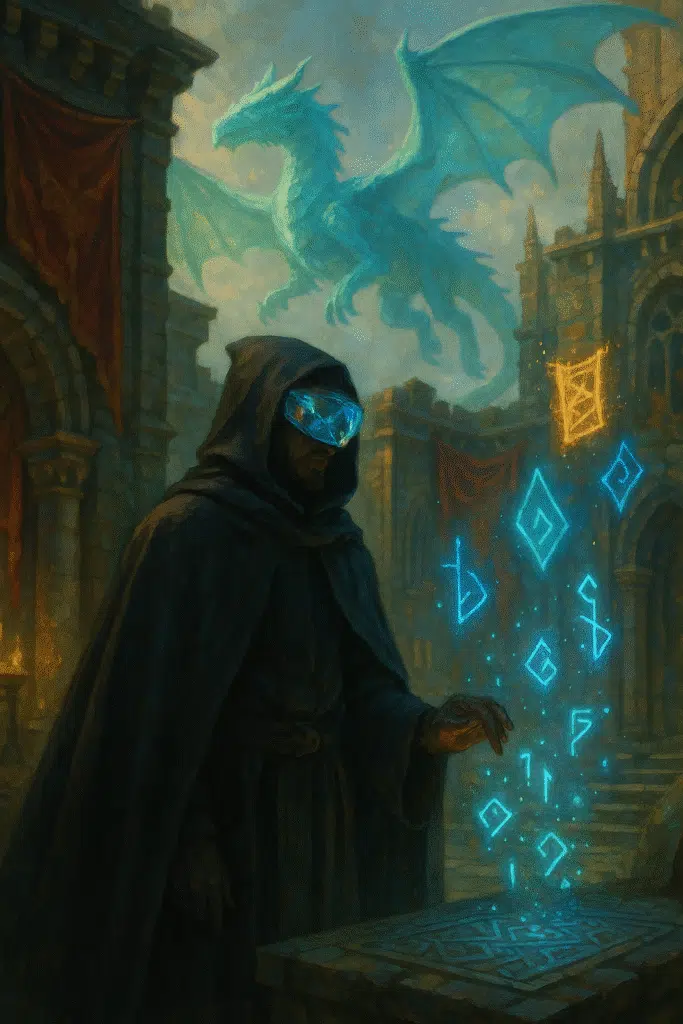
The Technology of Presence
VR, AR and mixed reality as storytelling mediums
Immersive technologies offer unprecedented opportunities to dissolve the boundary between audience and narrative, creating presence—the psychological sensation of being within a story rather than observing it. Each technology offers distinct storytelling capabilities that extend beyond mere spectacle.
Virtual Reality creates complete sensory immersion, controlling what users see, hear, and increasingly feel through haptic feedback. This totality makes VR uniquely suited for perspective-shifting narratives that build empathy by literally placing audiences in others’ positions. VR’s isolation from physical reality also creates unique opportunities for psychological storytelling that manipulates perception, scale, and embodiment in ways impossible in other mediums.
Augmented Reality overlays narrative elements onto physical environments, creating stories that respond to and incorporate actual locations. This integration makes AR particularly effective for location-specific narratives, historical reconstructions, and stories that explore the threshold between visible and invisible worlds. The partial immersion of AR—maintaining awareness of physical reality while experiencing fictional elements—creates natural opportunities for parallel storytelling where audiences toggle between connected worlds.
Mixed Reality blends virtual and physical elements with greater sophistication, allowing virtual objects to interact with physical environments and vice versa. This integration enables narrative experiences where story elements can emerge from everyday objects or where physical interactions trigger narrative developments—opening new possibilities for mystery, discovery, and revelation in storytelling.
Interactive elements that enhance rather than distract
Interactivity intensifies immersion when it deepens narrative engagement rather than becoming an end itself. The most effective interactive elements connect meaningfully to the story’s themes, characters, or emotional architecture rather than existing as isolated game mechanics or technical showcases.
Agency—the ability to influence outcomes—creates investment when choices reflect meaningful character dilemmas rather than arbitrary branching paths. Effective interactive storytelling often focuses on how choices reveal character rather than radically altering plots. This “expressive interaction” makes choice meaningful even when major outcomes remain consistent.
Physical interaction in immersive experiences works best when movements mirror the emotional content of the moment. Delicate, precise interactions create intimacy and focus; broad, powerful movements amplify moments of triumph or liberation. This physical-emotional alignment creates embodied understanding that enhances narrative impact.
The most sophisticated interactive elements evolve throughout the experience, changing as the story progresses. Early interactions might emphasize exploration and discovery, while later interactions leverage accumulated knowledge and emotional investment to create more complex engagement. This evolution prevents interaction patterns from becoming mechanical or predictable.
Low-tech immersion techniques that outperform gadgetry
Despite technological advances, many of the most powerful immersion techniques require minimal technical infrastructure. Understanding these foundational approaches ensures immersion even when technical resources are limited and enhances the effectiveness of technology when available.
Sensory constraint often creates stronger immersion than sensory bombardment. Selective darkness in theatrical experiences, focused sound design that eliminates ambient distraction, or physically enclosed spaces all intensify focus by removing competing stimuli. This selective deprivation makes the remaining sensory channels more impactful.
Participatory rituals create immersion through meaningful actions that align audiences with narrative worlds. From the simple act of turning pages in a book to more elaborate participation in theatrical experiences, these rituals create transitional moments that help audiences cross the threshold from observer to participant.
Physical proximities and configurations significantly impact immersion. Theatrical productions staged in unusual spaces or that position audiences within the action rather than before it create immediate immersion through spatial relationships. Similarly, the intimate space between a reader and book creates a psychological bubble that digital experiences often struggle to replicate.
The most effective immersive experiences often combine technological and traditional techniques, using each where most appropriate rather than defaulting to the most advanced available option. A whispered live voice will create more intimate connection than an elaborate digital effect; a simple shadow can create more effective tension than an expensive visual effect.
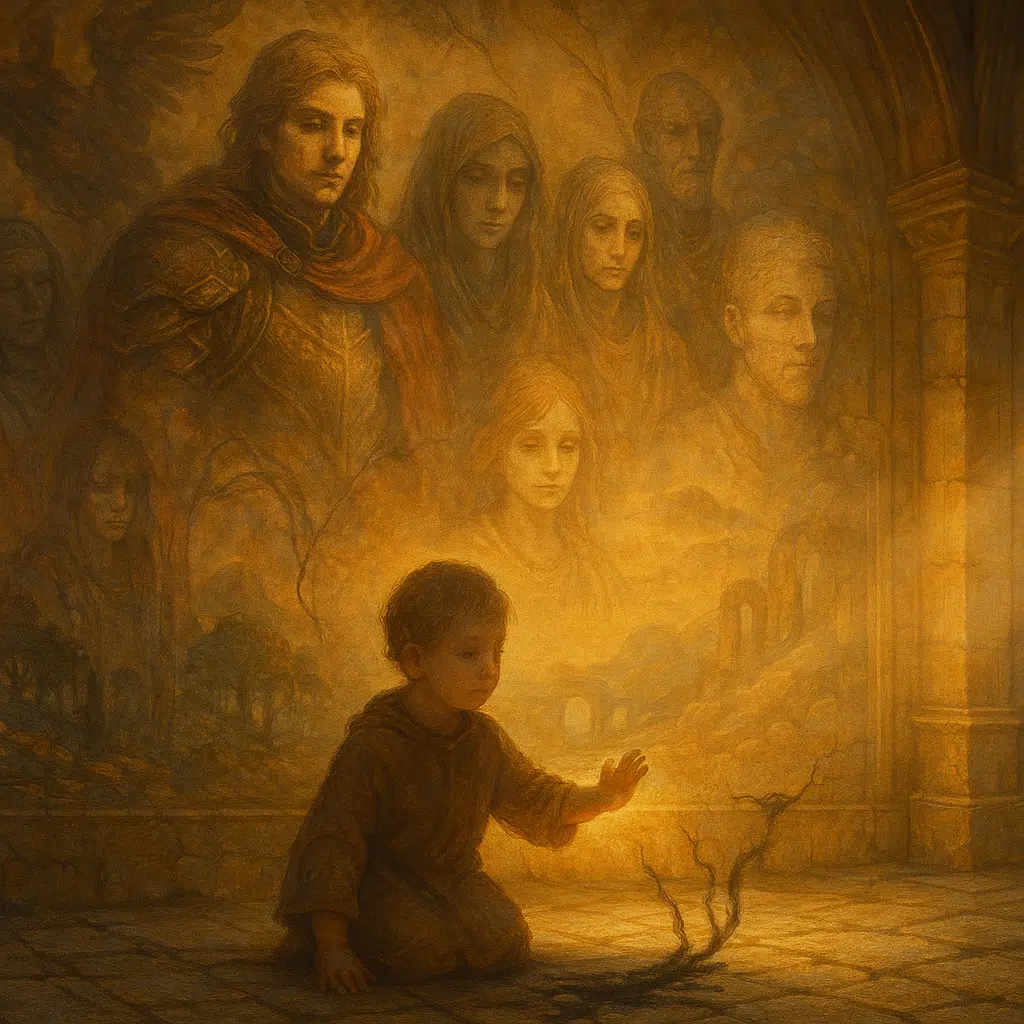
Strategic Incompleteness
The power of the unsaid and unseen
Complete exposition exhausts imagination; strategic omission activates it. The most immersive stories carefully calculate what to withhold, creating spaces that audiences instinctively fill with their own imagery and interpretation.
The unseen creates more powerful engagement than the explicitly shown, particularly for elements that trigger primal responses like fear, desire, or wonder. Our minds generate more personally resonant and emotionally charged imagery than even the most sophisticated visual effects can produce. This explains why suggestion often creates stronger horror than explicit portrayal, as our imaginations generate precisely what would disturb us most individually.
Negative space in narrative—what’s deliberately left blank—shapes perception of what’s explicitly included. Just as negative space in visual art defines and emphasizes visible elements, narrative omissions direct attention and create emphasis. By controlling what remains unsaid, creators guide audience focus while maintaining the illusion of discovery.
Strategic incompleteness extends to character development. Characters with carefully chosen unexplained aspects create persistent curiosity that maintains engagement. These gaps must be deliberate rather than arbitrary—suggesting significance without frustrating audiences through permanent withholding.
Creating gaps that invite co-creation
Co-creation occurs when audiences become active participants in generating meaning rather than passive recipients. Deliberately constructed narrative gaps invite this participation, transitioning audiences from consumers to collaborators without disrupting story coherence. This collaborative dynamic mirrors how story mechanics can create meaning beyond what words alone convey, using structural elements to generate emotional responses and deeper engagement.
Effective gaps exist at the intersection between guiding structure and creative freedom. Too much structure limits imaginative participation; too little creates disorientation. The ideal gap provides enough contextual framework to direct imagination while allowing genuine creative contribution.
These gaps function most effectively when positioned at emotionally significant moments, allowing audiences to personalize what matters most. Character backgrounds, unwitnessed events, or implied relationships create particular opportunities for meaningful co-creation that deepens investment.
Different media offer unique co-creation opportunities. Text invites readers to visualize environments and characters; audio experiences create mental imagery; visual media can use off-screen space and suggestion. Even highly detailed visual experiences can create co-creation opportunities through implication and subtext.
How audience imagination amplifies immersion
Imagination creates immersion more effectively than even the most sophisticated presentation because self-generated content is inherently tailored to individual psychology. When audiences contribute imaginatively to a story, they create elements perfectly calibrated to their own emotional responses.
This self-calibration explains why books often create more lasting imagery than their film adaptations despite fewer sensory inputs. Reader-generated images incorporate personal references, fears, desires, and associations that no external visualization could predict or replicate.
Psychological research demonstrates that self-generated content receives preferential processing in memory and emotional response. We value what we help create, making co-created story elements more meaningful and memorable than those simply presented to us, regardless of their objective quality or complexity.
The most sophisticated immersive experiences create what might be called “guided imagination”—providing just enough structure to invite specific types of imaginative contribution without dictating exact outcomes. This balance maintains narrative coherence while leveraging the immersive power of self-generated content.
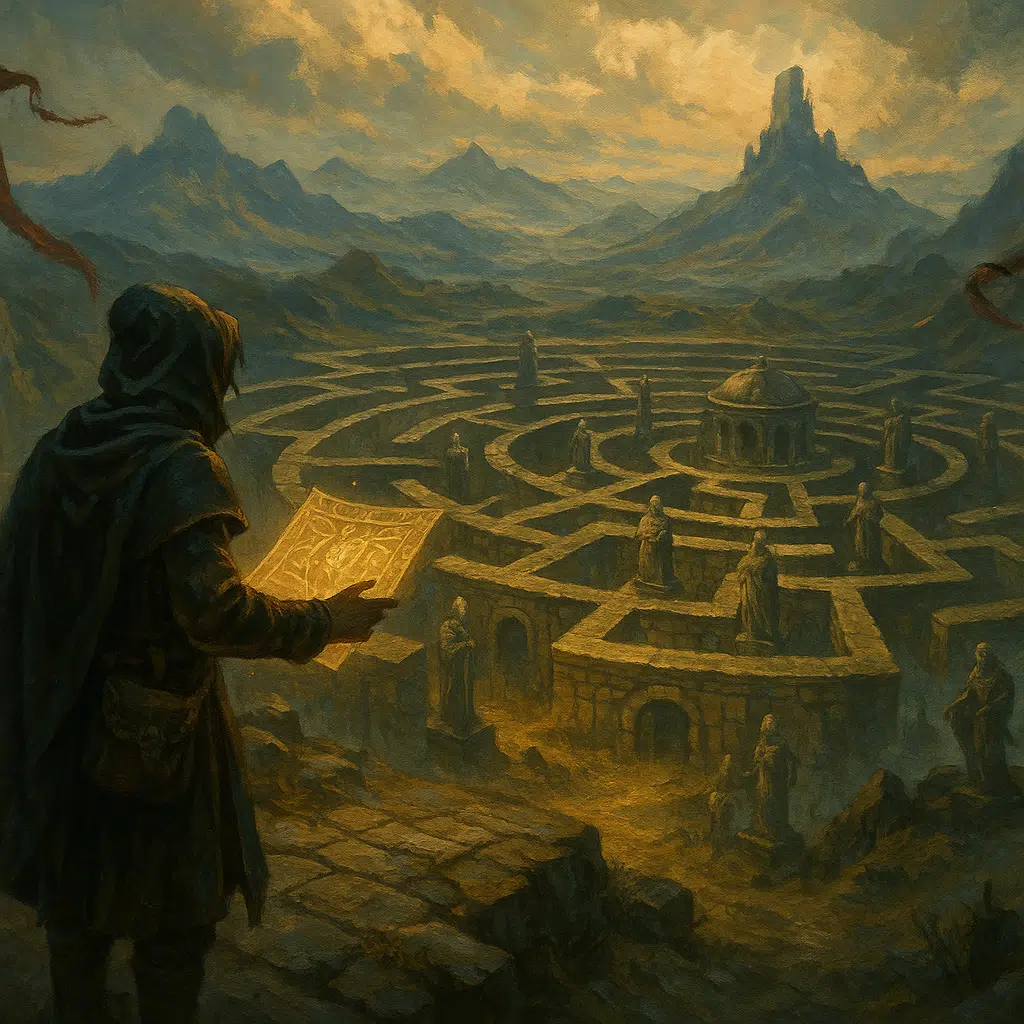
Designing Narrative Agency
The illusion of choice vs. meaningful participation
Agency—the sense of having meaningful impact within a narrative—creates profound immersion by transforming passive reception into active participation. However, creating genuine agency presents both technical and narrative challenges that many creators address through varied approaches to choice architecture.
The distinction between actual choice and the perception of choice proves crucial in immersive design. Research shows audiences often feel satisfied with significantly fewer actual decision points than they perceive, provided their limited choices meaningfully affect elements they value. This creates opportunities for what game designers call “the illusion of choice”—narrative structures that feel responsive while maintaining coherence.
Meaningful participation emerges not from the quantity of choices but from their qualitative significance. A single consequential decision that reflects character values or ethical dilemmas creates stronger engagement than numerous inconsequential choices. This explains why pivotal moral choices in games like The Walking Dead create more powerful emotional responses than games offering hundreds of tactical but emotionally neutral decisions.
The most sophisticated agency designs create what narrative designers call “consequence systems” rather than mere choice points. These interconnected networks of cause and effect create ripple effects throughout the narrative, making even small choices feel significant as their consequences emerge in unexpected contexts.
Guiding without railroading
The tension between narrative coherence and audience freedom represents one of immersive storytelling’s central challenges. “Railroading”—forcing audiences down predetermined paths regardless of their choices—destroys the sense of agency, while complete freedom often sacrifices narrative quality and emotional impact.
Effective guidance uses environmental design instead of artificial barriers. Rather than invisible walls or arbitrary restrictions, well-designed narrative environments naturally channel attention and movement through lighting, sound, spatial arrangement, and points of interest. These subtle influences guide without restricting, maintaining the feeling of discovery even in carefully orchestrated experiences.
Desire lines—paths that emerge naturally from human behavior—provide another guidance mechanism. By observing how audiences naturally navigate narratives and environments during testing, creators can align story progression with intuitive movement rather than forcing unnatural directions. This creates the sensation of following one’s own instincts rather than external instructions.
The most sophisticated guidance systems employ what game designers call “dynamic difficulty adjustment”—systems that monitor audience engagement and subtly modify challenges to maintain flow. In narrative contexts, this might mean adjusting puzzle difficulty, providing additional context when confusion emerges, or intensifying emotional elements when engagement metrics suggest diminishing interest.
Feedback loops between audience and story
Truly responsive immersive experiences create dialogue between audience actions and narrative developments, establishing feedback loops that make participation feel consequential rather than predetermined.
Immediate feedback creates connection between action and outcome, while delayed feedback creates anticipation and investment. The most sophisticated systems employ both: immediate responses that confirm agency, and delayed consequences that create lasting engagement through anticipation. This temporal layering mirrors real-world decision-making, where actions have both immediate and long-term effects.
The quality of feedback significantly impacts perceived agency. Generic responses diminish the sense of meaningful participation, while personalized feedback that references specific choices, timing, or patterns creates the sense that the story is genuinely responding to individual participation rather than following predetermined paths.
Escalating feedback intensity creates natural narrative arcs without restricting choice. Early decisions might produce subtle consequences, while later choices—made with greater knowledge and investment—trigger more significant outcomes. This progression creates natural intensification while maintaining consistent agency throughout the experience.
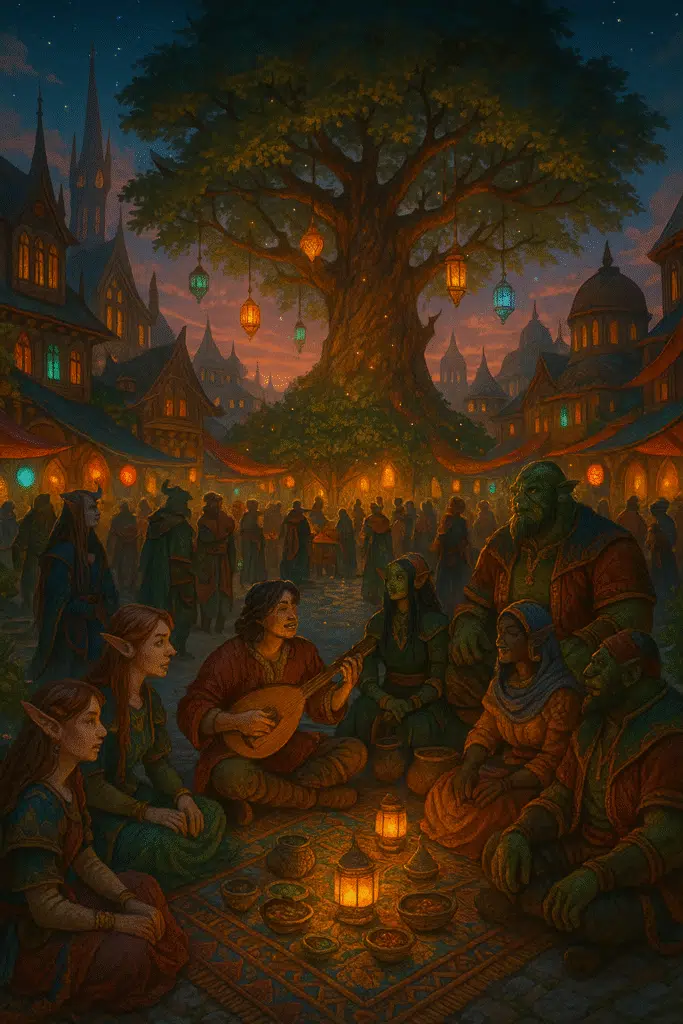
Inclusive Worldbuilding
Universal access points to specialized worlds
The most immersive worlds balance specialized depth with universal accessibility, creating multiple entry points that welcome diverse audiences without sacrificing richness or complexity. This inclusive approach expands reach while enhancing narrative richness through varied perspectives.
Universal human experiences provide natural access points to even the most fantastical settings. Star Wars introduces its complex galactic conflict through family relationships, mentor dynamics, and coming-of-age struggles—universal themes that create immediate emotional connection despite the unfamiliar setting. These familiar elements serve as bridges into unfamiliar worlds.
Graduated complexity allows audiences to engage at different knowledge levels simultaneously. The Marvel Cinematic Universe exemplifies this approach, with each film working as a standalone story while rewarding deeper knowledge through interconnected elements. This layered design allows newcomers and devoted fans to enjoy the same content without either feeling excluded or unchallenged.
The most sophisticated entry points create what narrative designers call “intuitive knowledge”—understanding that feels discovered rather than taught. Rather than explicit tutorials or exposition, these experiences embed learning into naturally engaging activities, allowing audiences to absorb world rules through participation rather than instruction.
Cultural authenticity without barriers to entry
Culturally specific elements create richness and authenticity but can inadvertently exclude audiences unfamiliar with their context. Inclusive worldbuilding creates understanding paths that make cultural elements accessible without diluting their authenticity or reducing them to superficial exoticism.
Contextual embedding—introducing unfamiliar elements within familiar frameworks—creates natural learning opportunities. Rather than explicitly explaining cultural practices or terminology, immersive worlds incorporate them into action sequences, character relationships, or conflict resolutions where their meaning becomes clear through context rather than exposition.
Universal parallels establish connections between unfamiliar cultural elements and widely recognized experiences. Coco introduces Mexican Day of the Dead traditions through universal themes of family remembrance and intergenerational connection, creating emotional resonance that transcends cultural specificity while honoring the tradition’s authentic meaning.
The most sophisticated approaches employ what anthropologists call “cultural translation”—maintaining authentic cultural elements while finding points of conceptual connection rather than direct equivalence. This approach preserves cultural specificity while creating understanding pathways through conceptual similarities rather than simplistic substitutions.
Representation as an immersion multiplier
Diverse representation doesn’t just fulfill ethical obligations—it actively enhances immersion by creating more entry points, more varied emotional connections, and more authentic world dynamics. Representation functions as an immersion multiplier, expanding both audience breadth and experience depth.
Psychological research demonstrates that recognition affects immersion profoundly. Seeing aspects of your identity reflected in narrative worlds reduces the cognitive load required for immersion, allowing more immediate and complete emotional engagement. This “reduced translation effect” explains why diverse representation creates stronger immersion across audience demographics.
Representation depth matters more than breadth. Superficial diversity without corresponding perspective diversity creates what audiences increasingly recognize as tokenism. The most effective representation incorporates not just visual diversity but diversity of viewpoint, value systems, and life experiences that influence how characters perceive and interact with the narrative world.
The most sophisticated approaches to representation create what sociologists call “narrative counterbalance”—consciously varying which identities occupy which narrative roles across the complete experience. This variation prevents any identity from becoming associated with limited roles while creating natural variety that enhances world authenticity.
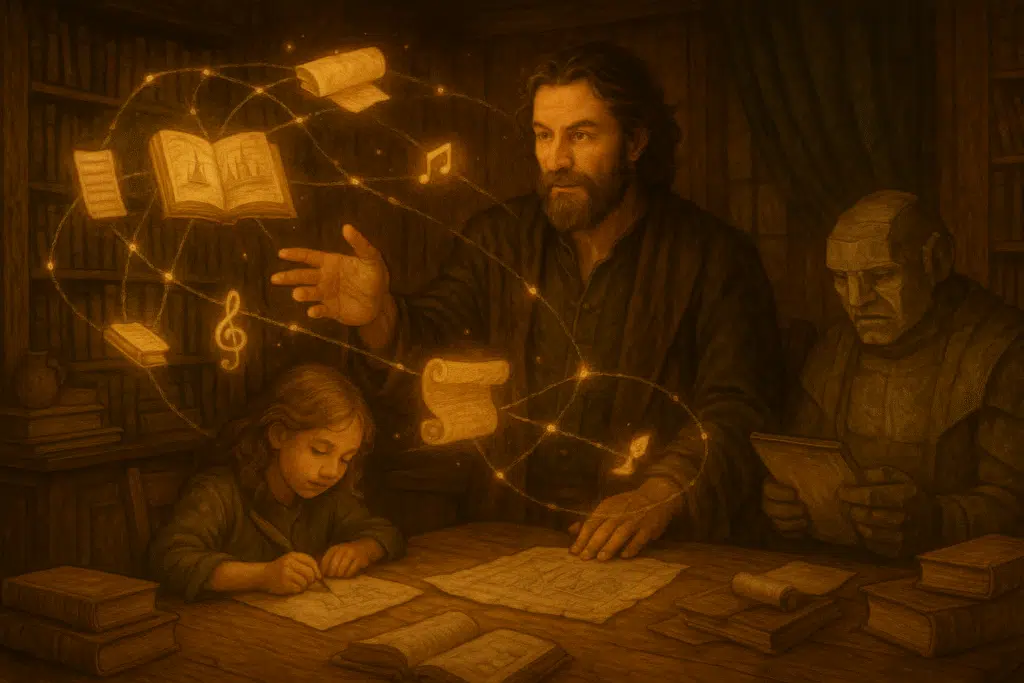
Cross-Platform Storytelling Ecosystems
Extending immersion beyond a single medium
Modern immersive worlds extend beyond single platforms, creating interconnected ecosystems where stories flow between media while maintaining coherent experience. These ecosystems create persistent immersion by surrounding audiences with multiple entry points and engagement opportunities.
Platform-specific strengths create natural content differentiation. Rather than simply reproducing the same content across platforms, effective ecosystems leverage what each medium does best: books for deep psychological exploration, visual media for spectacle and pacing, games for agency and exploration, audio for intimacy and imagination, physical experiences for embodied participation.
Temporal design—how content releases relate to one another—significantly impacts cross-platform immersion. Synchronized releases create event-like experiences with shared cultural moments, while staggered releases maintain engagement over longer periods. The most sophisticated ecosystems combine both approaches, creating peak moments within sustained engagement patterns.
The most effective cross-platform ecosystems incorporate what media scholars call “migration paths”—carefully designed transitions that guide audiences between platforms while maintaining immersion. These transitions might include narrative bridges, character connections, unresolved questions, or thematic developments that create natural movement between media without disrupting narrative continuity.
Transmedia storytelling that feels cohesive
Cohesive transmedia design requires more than consistent visual elements or shared characters—it demands unified emotional architecture and thematic consistency across platforms. This deeper coherence maintains immersion even as presentation methods change.
Emotional continuity—maintaining consistent emotional tone and thematic development across media—creates stronger cohesion than mere narrative continuity. Audiences forgive timeline discrepancies or minor plot inconsistencies more readily than emotional disconnects that make characters feel untrue to their established identity across platforms.
Platform-appropriate depth prevents what transmedia designers call “essential knowledge fragmentation”—the problem of requiring audiences to consume all media to understand core narrative developments. The most effective transmedia systems ensure each platform offers complete experiences while rewarding cross-platform engagement through enrichment rather than required knowledge.
The most sophisticated transmedia ecosystems employ what narrative designers call “constellation design”—organizing content so individual pieces function independently while collectively revealing larger patterns. This approach allows audiences to enter at any point and follow personal interest paths while gradually revealing the broader narrative universe through natural exploration.
Building worlds that travel between platforms
Transportable world elements—components that maintain their identity across media platforms—create recognition and continuity that support cross-platform immersion. Identifying and developing these elements ensures consistent world identity despite varying presentation methods.
Sensory signatures—distinctive visual, acoustic, or descriptive elements—create immediate world recognition across platforms. The Star Wars lightsaber sound, Harry Potter’s lightning scar, or Game of Thrones’ distinctive house sigils instantly establish world context regardless of medium. These signatures function as cognitive anchors that immediately activate previous world experiences.
Philosophical frameworks—the underlying value systems, conflicts, or questions that define a world—travel more effectively between platforms than specific plot points. Star Trek’s exploration of enlightenment values through space exploration remains consistent across media despite varying stories, creating philosophical continuity that supports world coherence.
The most robust transportable elements combine multiple recognition systems simultaneously. The Marvel universe maintains consistency through visual design systems, character relationship patterns, tonal balances between humor and drama, and philosophical questions about power and responsibility that remain recognizable across wildly different presentation formats and individual stories.

The Physical Dimension of Digital Stories
Tactile elements in virtual experiences
Physical sensation grounds even the most digital experiences, connecting virtual worlds to our embodied reality. Integrating tactile elements creates what neuroscientists call “sensory congruence”—alignment between what we see or hear and what we physically feel—significantly enhancing presence and immersion.
Haptic feedback systems continue advancing beyond simple vibration to create more nuanced physical sensations. Directional feedback, varied intensities, and textural simulation create more sophisticated connections between virtual actions and physical sensation. Even simple haptics significantly enhance immersion when synchronized precisely with visual and audio elements.
Environmental design—physical spaces that complement digital experiences—creates natural sensory congruence. Temperature adjustments that align with virtual environments, subtle air movement during flight sequences, or seating designed to mirror virtual transportation create physical sensations that support digital illusions without requiring specialized equipment.
The most innovative approaches employ what designers call “sensory substitution”—using available physical sensations to suggest different experiences. Specialized vests that create chest pressure during emotional moments, controlled temperature changes that suggest environmental conditions, or subtle scent release synchronized with virtual locations create multisensory immersion with relatively simple technology.
Environmental storytelling in physical spaces
Physical environments themselves can become storytelling mediums, communicating narrative through spatial arrangement, sensory design, and interaction possibilities. These environments create what architects call “narrative architecture”—spaces that guide emotional journeys through physical progression.
Sequential revelation—controlling what audiences encounter in what order—creates natural narrative structure without explicit direction. Theme parks exemplify this approach, designing physical paths that create emotional arcs through carefully sequenced reveals, vantage points, and sensory transitions. These principles apply equally to exhibition spaces, retail environments, and public installations.
Embedded narrative—environmental details that suggest stories without explicitly telling them—rewards exploration and creates co-creative engagement. Weathering patterns suggesting age, spatial arrangements implying relationships, or environmental modifications indicating past events all create narrative understanding through observation rather than exposition. Just as physical spaces can tell stories through arrangement and detail, authentic character profiles create depth through what they suggest about a character’s inner life, allowing audiences to discover personality through behavior rather than exposition.
The most sophisticated environmental storytelling employs what designers call “emergent narrative”—stories that develop through audience interaction with the environment rather than following predetermined sequences. Interactive installations where audience actions influence light, sound, or reactive elements create unique stories for each participant while maintaining thematic and emotional consistency.
Bridging digital and physical immersion
The boundary between digital and physical experiences continues blurring, creating hybrid forms that leverage the strengths of both realms. These bridges create what experience designers call “continuous immersion”—seamless transitions between digital and physical engagement that maintain narrative coherence.
Physical anchors for digital experiences—objects that connect virtual content to tangible reality—create psychological bridges between realms. Augmented reality markers, NFC-enabled objects that trigger digital content, or physical items representing virtual achievements all create connection points between worlds that enhance overall coherence.
Location-based storytelling uses physical movement as narrative structure, creating experiences that unfold through geographical exploration. From sophisticated alternate reality games to simple location-triggered content, these approaches ground digital narratives in physical reality, using actual environments as foundational storytelling elements.
The most innovative bridging approaches create what designers call “phygital experiences”—seamlessly integrated physical and digital elements that become indistinguishable within the narrative context. These experiences might use projection mapping to transform physical objects, responsive environments that adjust to digital inputs, or synchronized elements where physical and digital components respond to each other in real time.
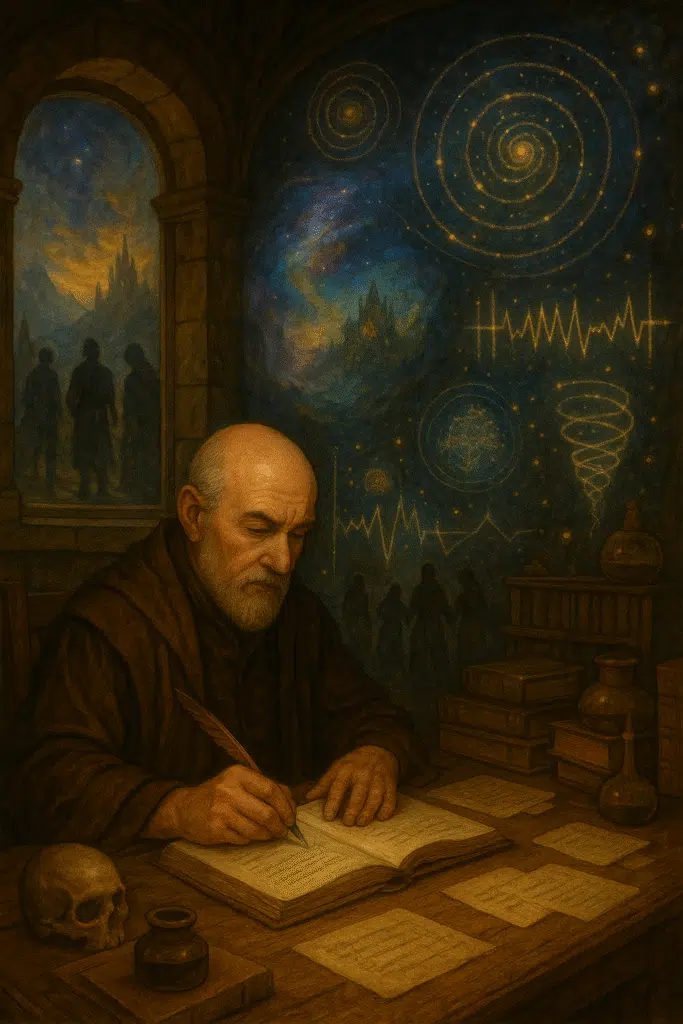
Measuring Immersion: Beyond Engagement Metrics
Qualitative signals of successful immersion
Traditional engagement metrics—time spent, completion rates, interaction frequency—provide limited insight into genuine immersion. More meaningful evaluation requires qualitative signals that indicate psychological presence and emotional investment.
Unconscious behaviors offer powerful indicators of immersive success. Physical responses like postural sway when virtual environments move, instinctive dodging or flinching during threatening content, or mirroring facial expressions of digital characters all demonstrate psychological presence more reliably than self-reported measures or engagement statistics.
Narrative transportation markers—behaviors indicating audience members have temporarily forgotten their physical context—provide clear immersion evidence. These might include delayed responses to external stimuli, continued physical gestures associated with the narrative after formal engagement ends, or disorientation when transitioning back to normal environments.
The most sophisticated immersion assessment combines behavioral observation with physiological measurement. Changes in heart rate variability, skin conductance, pupil dilation, or breathing patterns during emotional narrative moments provide objective evidence of immersive engagement that transcends cultural expression differences or audience self-awareness limitations.
The afterglow effect: stories that linger
Truly immersive experiences continue affecting audiences after formal engagement ends, creating what psychologists call “narrative afterglow”—continued psychological and emotional processing that extends impact beyond the experience itself.
Behavioral integration—incorporating elements from narrative worlds into daily life—provides clear evidence of powerful immersion. This might manifest as adopting language from fictional worlds, applying problem-solving approaches modeled by characters, or reorganizing personal environments to reflect narrative aesthetics. These integrations demonstrate narrative experiences becoming part of personal identity rather than merely consumed content.
Dream incorporation represents particularly powerful immersion evidence. When narrative worlds appear in dreams, they have penetrated to unconscious processing levels, indicating exceptional psychological engagement. This integration demonstrates the narrative has been absorbed into fundamental meaning-making systems rather than remaining isolated entertainment.
The most meaningful afterglow measurement examines what psychologists call “narrative transfer”—how story experiences influence real-world perception and behavior. This might include increased empathy for groups represented in the narrative, shifted perspectives on social issues explored through story, or new approaches to personal challenges based on narrative models.
Feedback mechanisms that preserve the immersive bubble
Gathering audience insights without disrupting immersion requires specialized feedback approaches that maintain narrative continuity while providing actionable data. Traditional satisfaction surveys or interruption-based feedback mechanisms often damage the very experiences they attempt to evaluate.
In-narrative feedback systems gather data while maintaining immersion by embedding evaluation mechanisms within the story world itself. Character interactions that assess audience understanding, environmental responses that adapt to engagement patterns, or narrative branches that respond to observed emotional responses all gather valuable data without breaking immersive continuity.
Passive measurement—collecting behavioral data without requiring conscious participant input—preserves immersion while providing insight. Eye-tracking heat maps showing attention patterns, movement tracking revealing engagement through physical responses, or interaction logging that identifies points of confusion or heightened interest all provide rich data without disrupting experience.
The most sophisticated approaches employ what researchers call “experience sampling”—brief, contextually appropriate check-ins that gather in-the-moment feedback without significant immersion disruption. These might include thematically integrated reaction points, character interactions that naturally solicit opinion, or environmental features that invite quick expression without breaking narrative frame.
As our media landscapes continue to evolve, the essence of storytelling remains beautifully human—our desire to inhabit other worlds, walk in different shoes, and experience the impossible. The storytellers who master immersion aren’t just entertaining audiences; they’re creating spaces where people discover parts of themselves they never knew existed. Perhaps this is the true magic of immersive storytelling—not simply transporting us elsewhere, but returning us to ourselves, changed in ways both subtle and profound by the journeys we’ve taken through worlds that exist only in our collective imagination.






